- Home
- James Patterson
Cross the Line Page 17
Cross the Line Read online
Page 17
“Like I said, I wouldn’t get a thing done,” Muller said and he smiled at Noble in a way that Bree found kind of strange.
Noble did not respond, merely took out the three bullets that had killed Tommy McGrath, the two that had struck Edita Kravic, and the single shot that had ended Terry Howard’s life.
“They’re all a match for this gun,” Muller said, handing over the suicide .45 in an evidence bag.
“Says who?”
“I dunno,” Muller said. “Someone here.”
“I can call up the report,” Bree said, pulling out her phone.
Noble held up her hand. “I believe you. So all you’re looking for is confirmation that the ammunition in this box matches these six rounds?”
“Exactly,” Bree said.
“It should be easy,” the tech said. “We have everything Federal makes in the SAF, the standard ammunition file.”
She looked at the end of the box. “Personal-defense grade, two hundred and thirty grain. Pretty standard for a forty-five semiautomatic.”
Noble opened the box, took out one of the fourteen remaining bullets, looked at it, and frowned. “That doesn’t match.”
Chapter
63
“What?” Muller said. “You haven’t even looked at the others.”
“I don’t need to,” Noble said, miffed. “The unfired cartridges here might indeed match the killing rounds, but they do not match the labeling on the Federal box.”
“No markings around the primers, right?” Bree said.
Noble cocked her head in appreciation and nodded. “That is correct, Chief Stone. All commercially made handgun ammunition has a stamp indicating manufacture and caliber on the brass around the primer.”
“Which means what?” Muller asked.
“Which means that these are hand loads,” the tech said. “Someone bought the components—the brass, the powder, the primer, and the bullets—and built these to custom specifications.”
“We didn’t see any hand-loading equipment at Howard’s apartment or in the storage unit,” Muller said.
“He could have hired someone to build the bullets,” Noble said.
“So do they all match?” Bree asked.
“Give me a few minutes,” Noble said, and then she looked at Muller. “You neat enough to get coffee and bring it back?”
“On my best days,” Muller said, and he gave her that goofy grin again.
While Noble told Muller how to get to the cafeteria, he continued to moon at her. Bree happened to look at the ammunition tech’s left hand. No ring.
She fought not to laugh. Muller was smitten!
Part of her wanted to mention his kidney stones or one of his other ailments, but she took pity and said nothing when he hurried off.
“He’s an odd duck,” Noble said, starting to work on the bullets.
“He kind of grows on you after a while,” Bree said.
“Married?” the tech asked.
“Divorced.”
“Hmm,” Noble said, and she kept at her work.
Twenty minutes later, Muller returned. The ammunition specialist didn’t look his way. She stared at the image of a bullet on her computer screen.
He put the coffee in front of her, and she said, “The bullets in the box are a match for the used slugs. They’re all Bear Creek moly-coated two-hundred-grain RNHBs. Which are about as far as could be from the specs on the box. These were made by and for an expert to exact, competition-level specs.”
“You mean like three-gun competitions?” Muller asked.
“Or straight pistol on a combat range,” the tech said.
“That’s a problem, then,” Bree said. “As far as we know, Terry Howard never competed with a pistol, never built his own bullets, and was not a gun nut. Well, not a pistol nut.”
“Howard could have gotten the custom ammunition with the gun,” Noble said. “Bought them from the owner.”
Bree said, “Or maybe an expert shot, someone who competes with a forty-five handgun and builds his own ammo, killed all three of them and framed Howard to get away with it.”
Chapter
64
They waited until the heart of the cloudy night before turning on night-vision goggles and climbing over the chained and locked aluminum gate.
Hobbes and Fender went over smoothly, making no sound. But John Brown’s bad knee was acting up again. As he straddled the gate, the chain clinked ever so softly.
Brown landed on the dirt road on the other side. A dog barked once, straight to the south, five, maybe six hundred yards. Brown saw in his night-vision goggles that Hobbes was holding up his hand for him not to move.
Another bark, and then nothing for five long minutes.
“Like a cat, now,” Fender whispered through a jawbone microphone, and he began to pad down the dirt driveway.
Fender wore fleece-bottomed booties over his sneakers. They all wore them and barely made a sound moving deeper and deeper into the property. The dog stayed quiet.
That wouldn’t last long with a trained canine listening and scent-checking the wind. For the moment, however, they had it made from a scent perspective. A sturdy breeze blew right in their faces. The dog’s superior nose was disabled.
But sooner or later, one of the German shepherds would hear something or perhaps see them moving into position. If the noise was blatant or the dog got a solid look at them, it would certainly bark and sound an alarm. Things would get difficult then, but not untenable.
If the movements and noises they made were soft and irregular, however, the dogs would be uncertain and would come to investigate. And that would make things easier all around.
They crossed a clearing without alerting the dogs and crept closer. Slats of light from the house were visible through the trees when Hobbes toed a rock. It rolled and tumbled into the ditch.
The dog barked once. Brown and his men froze, listening, and heard a low growl and then a heavy dog’s nails clicking and scraping on porch floorboards. They’d anticipated something like this scenario and stayed with their plan. Hobbes stepped off the right side of the driveway into the ditch. He leaned against the bank there, both hands gripping a pistol with tritium night sights.
Brown and Fender did the same on the left side of the drive, back to back, with Brown facing the house with his pistol, Fender covering their trail with an ultralight, suppressed backpacking rifle.
Rather than circling to catch their scent in the wind, the dog came directly at them, trotting confidently down the driveway and into the dense pines where they waited.
When the dog was fifteen yards away, Hobbes pulled the trigger, causing a burst of pressurized air to drive a tranquilizer dart into the animal’s shoulder.
It made a soft yipping sound, staggered to its left, panted, and went down.
No one budged for another five long minutes, during which Brown caught the faint sound of—cheering? And where was the second dog? Inside?
Hobbes moved first; he stalked forward to the edge of the yard, Brown right behind him. Fender passed them and stuck to the shadows, moving to the right and up onto a dirt mound where he could get a better look at the front of the house.
Brown paused next to Hobbes, hearing the voices of announcers and seeing the flicker of a television through the partially open blinds of the room to the right of the front door.
“See anything in there?” he murmured.
Chapter
65
A few moments later, Fender said, “College football highlights playing on the big-screen, but I’m not seeing anyone in there watching. Dark, though. Lot of shadows. Hard to tell.”
“I’m going,” Brown said, and he moved slowly across the yard, heading past a Grady-White fishing boat toward a motorcycle. He crouched by the side of the bike and worked at a leather saddlebag strap with leather gloves.
When Brown had it open, he drew out from his jacket a plastic ziplock bag that held a kit wrapped in dark cloth. He got the kit free of the plastic and
placed it behind a tool kit in the saddlebag.
Then he reached into a top pocket and fished out a film canister. He opened it and spilled the contents onto the gas tank.
“I’ve got him,” Fender whispered in Brown’s earbud. “He’s leaning forward in a chair. Just changed the channel.”
“Kill him if you can,” Brown said, buckling the saddlebag.
Fender’s ultralight rifle produced a sound similar to the air pistol’s. The bullet made a small tinkling noise as it passed through the screen, the blinds, and the window, and then there was the sound of lead hitting flesh and bone.
“Done,” Fender said.
“Done,” Brown said; he spun away from the Harley and took off in a low crouch across the yard.
Inside the house, a woman began to scream.
“Shit,” Hobbes said. “He wasn’t alone.”
“Too late,” Brown said. “Get to the car.”
They sprinted into the pines, through them, and across the clearing. When they entered the woodlot close to the road, Brown thought they were going to get away clean. The woman had stopped screaming. She was probably calling 911, but they were less than one hundred yards from the car. Nothing could—
A form hurtled out of the woods to Brown’s right and sprang at him with a guttural snarl. The second dog got hold of his upper right arm and bit down viciously.
“Ahhh!” Brown cried out, feeling his flesh rip as the dog shook its head and dragged him down. Brown sprawled on his side, but he still had his pistol in his right hand.
The dog released its hold and bit again, harder this time.
Before Hobbes or Fender could do a thing to help him, Brown let go of the pistol, grabbed it with his left hand, and, at point-blank range, fired a tranquilizer dart into the attack dog’s stomach.
It yelped and scratched the back of Brown’s head getting off him. It didn’t make it six more feet before flopping over and panting.
Part Four
The Regulators
Chapter
66
An hour after sunrise, Ned Mahoney, John Sampson, and I were looking into an open saddlebag attached to Nicholas Condon’s Harley-Davidson. There was a rectangular package inside, wrapped in dark cloth.
“What’s in it?” Mahoney asked.
“Haven’t looked,” Condon said. “Soon as I saw it, I called Dr. Cross.”
“Before or after someone shot at you?” Mahoney said.
“You mean before or after someone head-shot my dummy,” Condon said. “That’s exactly why I’ve got a little winch on a timer in there. Makes the mannequin move every four or five minutes throughout the night. Handy gadget.”
I didn’t comment on the fact that the sniper had to have a decoy in order to sleep soundly; I just focused on the package.
“No indication of a bomb?” Sampson asked.
“No,” Condon said. “After Azore woke up, I had him sniff it.”
“Could the lingering effects of the drug throw off the dog’s sense of smell?” I asked.
“I’d be glad to take the package out for you if you’re not up to the job.”
“I’ll do it,” Mahoney said, and he stuck a gloved hand into the saddlebag and came out with the package. “Heavy.”
He set it down and started to work at the knot that held the fabric together.
“You said they were scared off by a woman screaming,” Sampson said.
“I said they were scared off by a woman’s scream,” Condon said. “An app on my iPhone. Goes to Bluetooth and my speakers. You’d swear she was right there, screaming her head off.”
“How’s the other dog?” I asked. “The one you said bit one of them?”
“Denni. She’s resting inside.”
“We didn’t find any blood out on the road yet,” Mahoney said, finally getting the knot undone.
“There’s blood there somewhere,” Condon said. “I could hear the guy yelling. She got into him good before he knocked her out.”
“You wash her?”
“No, but I caught Azore licking her muzzle, so I don’t know what you’ll get from her.”
“Okay,” Mahoney said, folding back the fabric, revealing something silkscreened on the other side and a cardboard box.
He lifted the box up. We could see now that the fabric was a piece of a T-shirt featuring artwork for Reggae Sunsplash, a Jamaican music festival.
“I wondered where that went,” Condon said.
“Stolen?”
“Or I left it at the gym. Either way, my DNA will be all over it.”
Mahoney opened the cardboard box. There was a large envelope inside and a .45-caliber Remington model 1911.
“That yours?” I asked.
“No,” he said. “Nice gun, though I prefer a Glock in a forty caliber.”
“Me too, actually,” Mahoney said, opening the envelope.
He pulled out several pages of architectural drawings and diagrams.
“Yours?” Sampson asked.
Condon looked them over and shook his head. “No. What are they?”
Mahoney shrugged and gave them to me. I studied them and almost handed them off to Sampson before it dawned on me what they were.
“These are drawings of the attack locations,” I said. “This one’s the factory where they killed the meth makers. And this one shows an aerial view of the tobacco-drying sheds and the road coming down the middle.”
Condon said, “Before you say anything, there is no way those are mine. This was supposed to be a diversion. Kill me and plant evidence. Keep you guys off the trail of the real vigilante crew.”
The more I thought about it, the more I thought Condon was right—unless, of course, he’d shot his dummy-on-a-rope and put the evidence in his saddlebag to keep us from suspecting he was part of the vigilante group.
For the time being, however, I was going to trust him.
“So whoever they are, they think you’re dead,” Sampson said.
“A fair assumption,” Condon said.
“Let’s let them think it,” I said.
Mahoney looked at me with a raised eyebrow. “What for?”
“Make them believe that they’ve succeeded and the investigation has shifted to looking at Condon’s circle of mercenary friends.”
“And we start quietly looking for a victim of a dog bite,” Sampson said.
“Among other things,” I said, trying to wrap my head around this entire incident. Why implicate Condon? Why not someone else? Why attempt to kill him?
The only solid answer I came up with was that they knew of Condon’s past and had decided he would be the perfect fall guy.
“I thought of that while I was waiting for you to get here,” Condon replied. “But maybe it was more than that. Maybe they were trying to kill me because I do know something about your vigilantes. Two of them, anyway.”
Chapter
67
That morning, as Alex, Sampson, and Mahoney were talking to Condon, Bree was struggling to make connections between the late chief of detectives Tom McGrath, Edita Kravic, and a competition pistol shooter.
She had the late Terry Howard’s service records up on her computer screen. Four times during Howard’s career, he’d failed his annual shooting qualification test. On his best day, he was evaluated as an average shot.
Hardly the competitor, Bree thought and shut the file.
But lots of police officers did compete. It kept their marksmanship sharp. So she couldn’t discount the possibility of a cop or a former cop or a former military guy, perhaps someone McGrath and Howard knew, being the shooter.
Her desk phone rang.
“Stone,” she said.
“Michaels,” the police chief said. “I’m not happy.”
“Chief?”
“I’m hearing rumors that you’ve reopened the McGrath case.”
“True,” she said, her heart starting to race.
“Goddamn it, Stone, I’m going to get crucified over this. Howard’
s our guy. You said so yourself.”
“I believed it then, Chief,” she said. “But not now.”
She recounted her visit to the FBI lab and finished by saying, “So I think the way we look at this is, we take some lumps for jumping to the wrong conclusion, but we’ll get applauded when it comes out we were dogged enough to recognize our mistake and find the real killer.”
Chief Michaels sighed, said, “I can live with that. Any suspects?”
“Not yet.”
“We’re at square one on a dead cop?”
“Definitely not,” she said. “We’ve got new leads we’re actively working.”
“Keep me posted, will you please?”
“You’ll be the first to know everything, Chief,” she said, and he hung up.
Bree set her phone down, thinking that that had gone smoother than she’d expected. Maybe she was getting better at the job, not as rattled by every crisis.
After Sampson and I got back from talking to Condon, I stuck my head into Bree’s office. “We’ve had a couple of breaks you need to know about.”
Bree smiled. “I could use some good news.”
“Oh, we’ve got lots of news,” Sampson said, coming in behind me. “Can’t figure out if it’s good or bad.”
As we told her about our trip to Nicholas Condon’s place, the planted evidence, and the possibility that the sniper knew two of the vigilantes, I sent two pictures to a screen on Bree’s wall.
One photograph showed a wiry man in a nice suit with a face that was a fusion of Asia and Africa. He had a quarter-inch of beard and was leaning against a car, smoking a cigarette—he looked like the kind of guy who would fit in anywhere. The other picture showed a U.S. Army Green Beret officer with pale skin and a battle-gaunt face.
“The suit is Lester Hobbes, ex-CIA,” Sampson said. “The soldier turned mercenary is Charles Fender.”

 Miracle at Augusta
Miracle at Augusta The Store
The Store The Midnight Club
The Midnight Club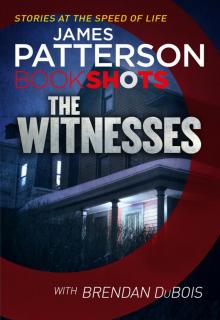 The Witnesses
The Witnesses The 9th Judgment
The 9th Judgment Against Medical Advice
Against Medical Advice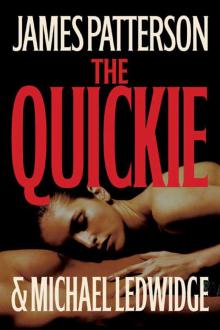 The Quickie
The Quickie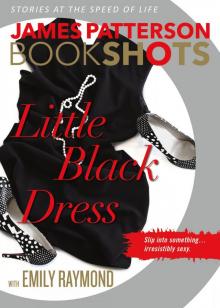 Little Black Dress
Little Black Dress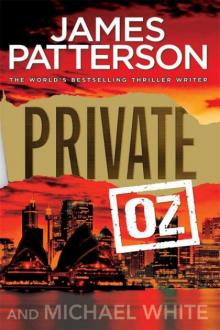 Private Oz
Private Oz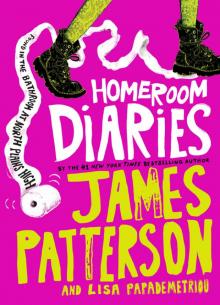 Homeroom Diaries
Homeroom Diaries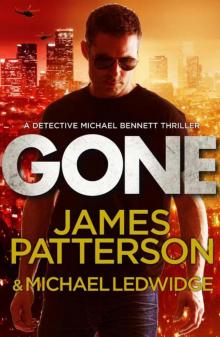 Gone
Gone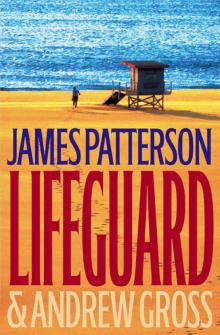 Lifeguard
Lifeguard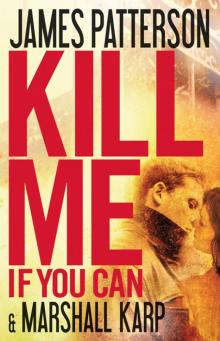 Kill Me if You Can
Kill Me if You Can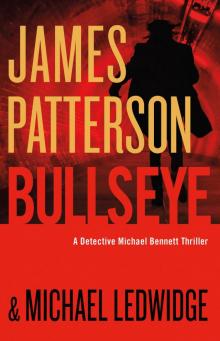 Bullseye
Bullseye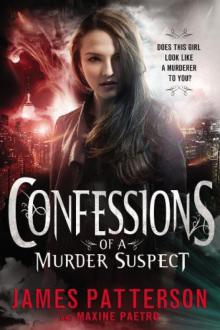 Confessions of a Murder Suspect
Confessions of a Murder Suspect Black Friday
Black Friday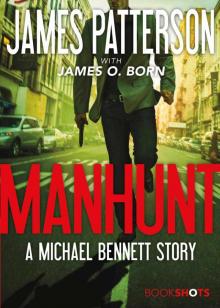 Manhunt
Manhunt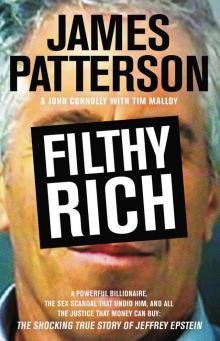 Filthy Rich
Filthy Rich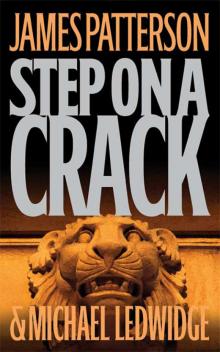 Step on a Crack
Step on a Crack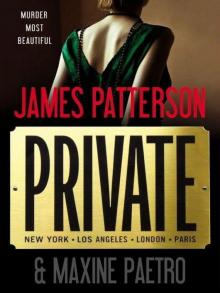 Private
Private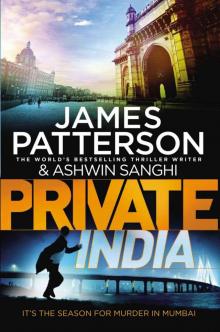 Private India
Private India Game Over
Game Over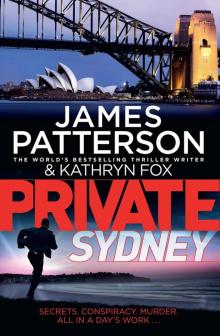 Private Sydney
Private Sydney The Murder House
The Murder House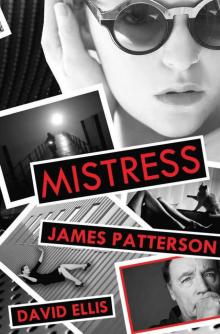 Mistress
Mistress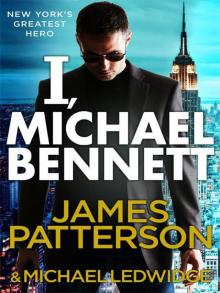 I, Michael Bennett
I, Michael Bennett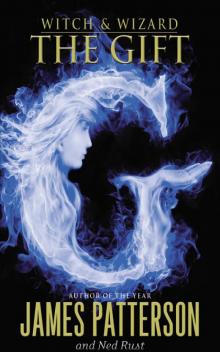 The Gift
The Gift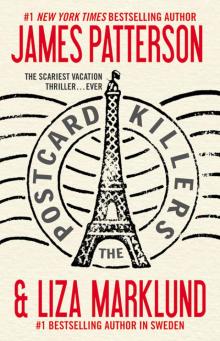 The Postcard Killers
The Postcard Killers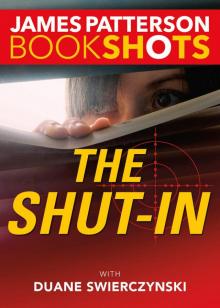 The Shut-In
The Shut-In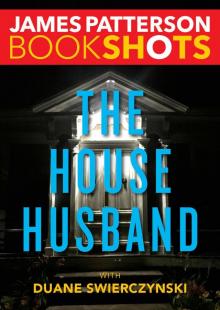 The House Husband
The House Husband The Lost
The Lost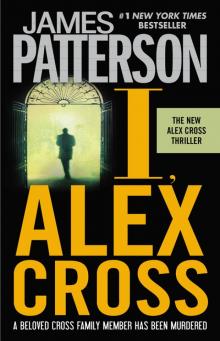 I, Alex Cross
I, Alex Cross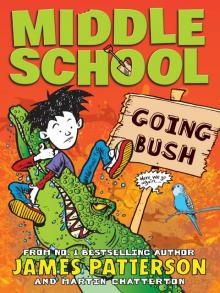 Going Bush
Going Bush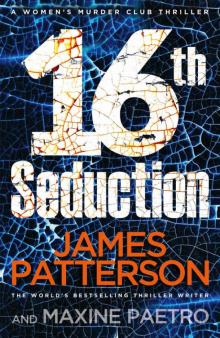 16th Seduction
16th Seduction The Jester
The Jester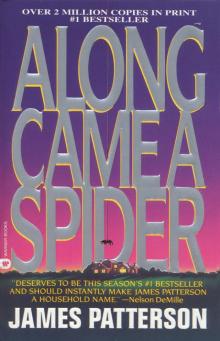 Along Came a Spider
Along Came a Spider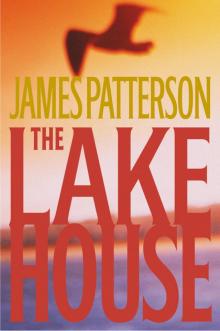 The Lake House
The Lake House Four Blind Mice
Four Blind Mice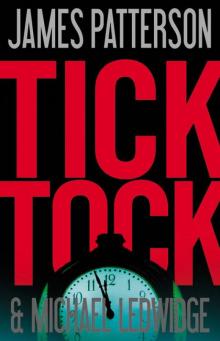 Tick Tock
Tick Tock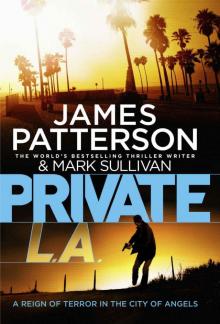 Private L.A.
Private L.A.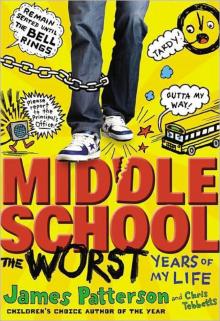 Middle School, the Worst Years of My Life
Middle School, the Worst Years of My Life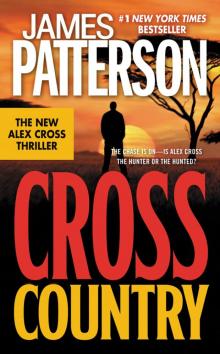 Cross Country
Cross Country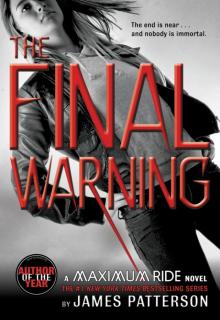 The Final Warning
The Final Warning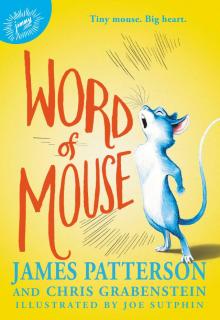 Word of Mouse
Word of Mouse Come and Get Us
Come and Get Us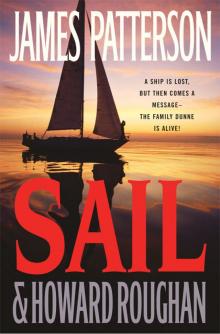 Sail
Sail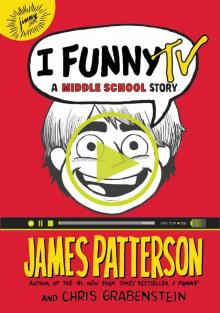 I Funny TV: A Middle School Story
I Funny TV: A Middle School Story Private London
Private London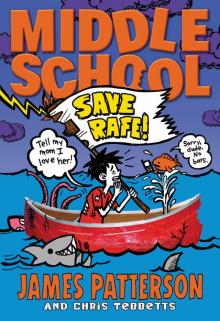 Save Rafe!
Save Rafe!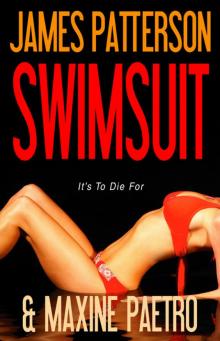 Swimsuit
Swimsuit Sam's Letters to Jennifer
Sam's Letters to Jennifer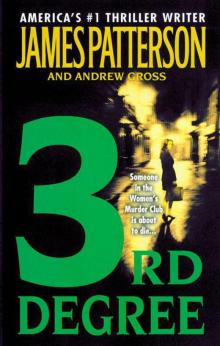 3rd Degree
3rd Degree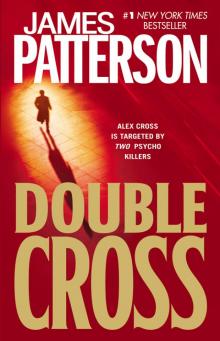 Double Cross
Double Cross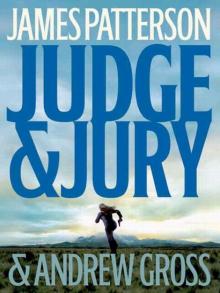 Judge & Jury
Judge & Jury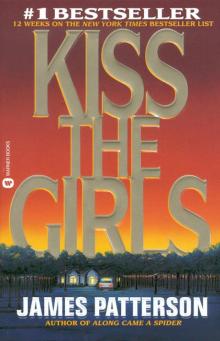 Kiss the Girls
Kiss the Girls Second Honeymoon
Second Honeymoon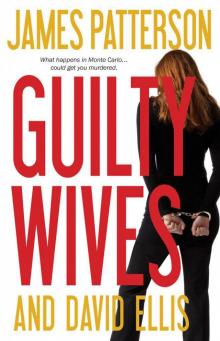 Guilty Wives
Guilty Wives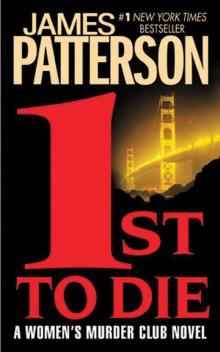 1st to Die
1st to Die NYPD Red 4
NYPD Red 4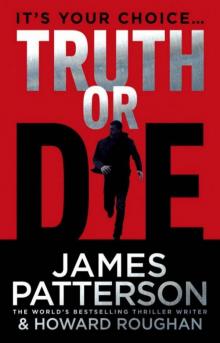 Truth or Die
Truth or Die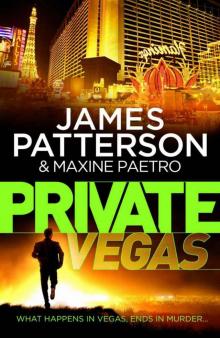 Private Vegas
Private Vegas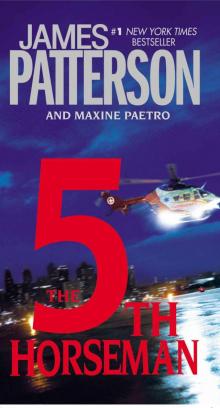 The 5th Horseman
The 5th Horseman 7th Heaven
7th Heaven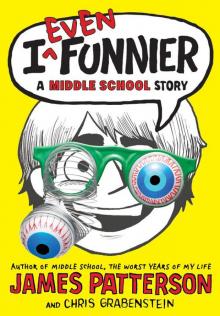 I Even Funnier
I Even Funnier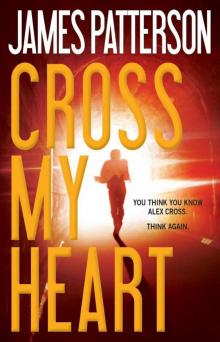 Cross My Heart
Cross My Heart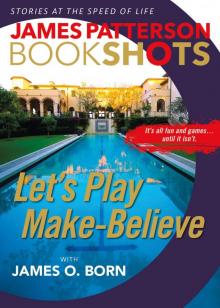 Let’s Play Make-Believe
Let’s Play Make-Believe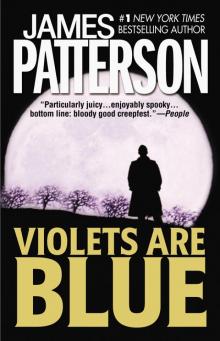 Violets Are Blue
Violets Are Blue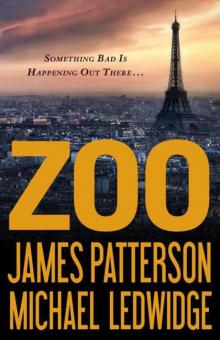 Zoo
Zoo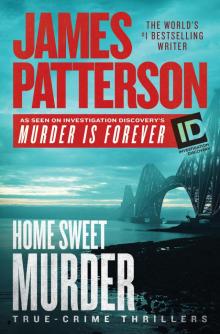 Home Sweet Murder
Home Sweet Murder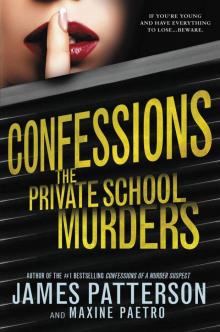 The Private School Murders
The Private School Murders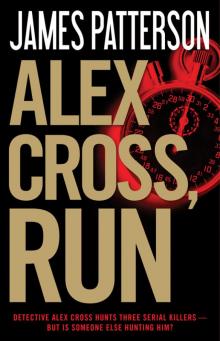 Alex Cross, Run
Alex Cross, Run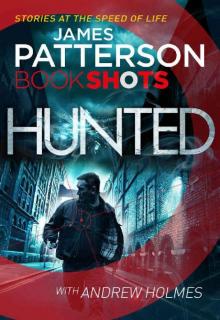 Hunted: BookShots
Hunted: BookShots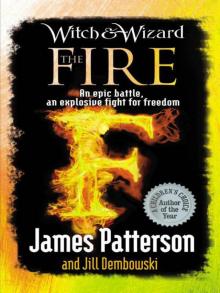 The Fire
The Fire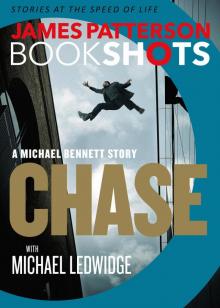 Chase
Chase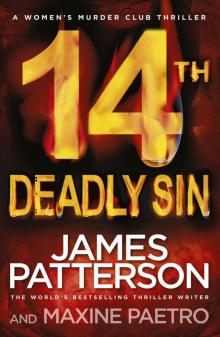 14th Deadly Sin
14th Deadly Sin Bloody Valentine
Bloody Valentine The 17th Suspect
The 17th Suspect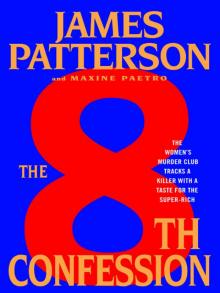 The 8th Confession
The 8th Confession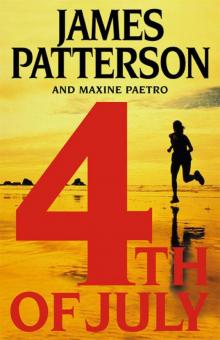 4th of July
4th of July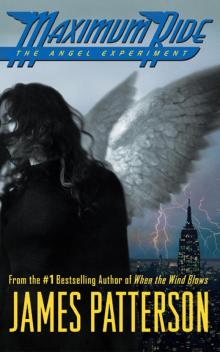 The Angel Experiment
The Angel Experiment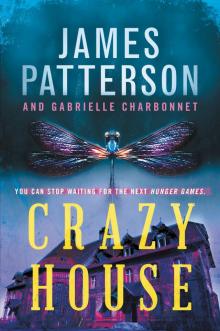 Crazy House
Crazy House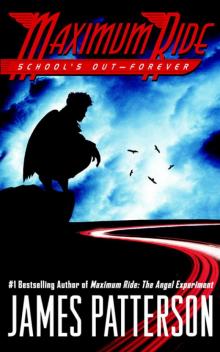 School's Out - Forever
School's Out - Forever Suzanne's Diary for Nicholas
Suzanne's Diary for Nicholas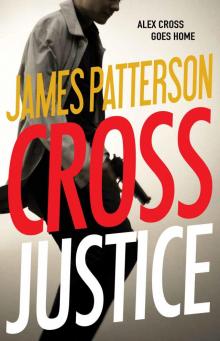 Cross Justice
Cross Justice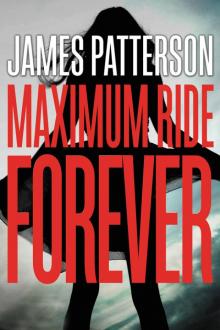 Maximum Ride Forever
Maximum Ride Forever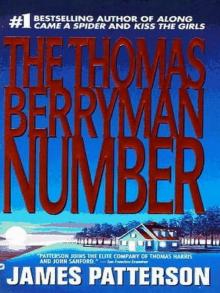 The Thomas Berryman Number
The Thomas Berryman Number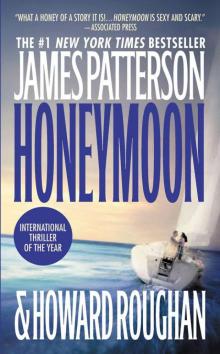 Honeymoon
Honeymoon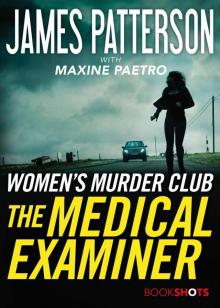 The Medical Examiner
The Medical Examiner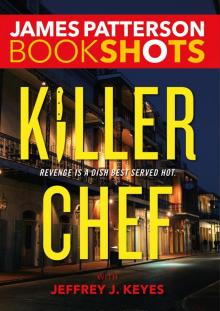 Killer Chef
Killer Chef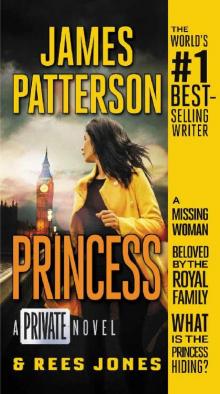 Private Princess
Private Princess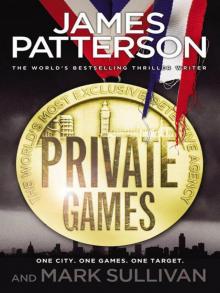 Private Games
Private Games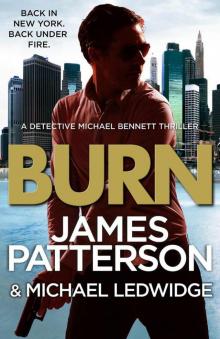 Burn
Burn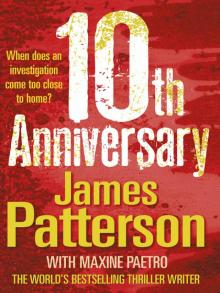 10th Anniversary
10th Anniversary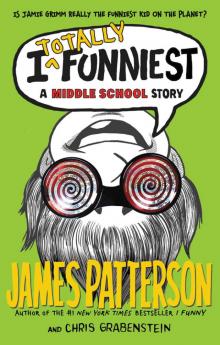 I Totally Funniest: A Middle School Story
I Totally Funniest: A Middle School Story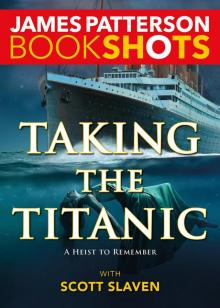 Taking the Titanic
Taking the Titanic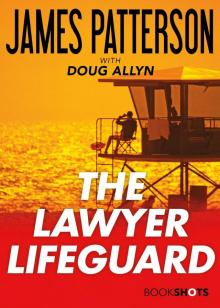 The Lawyer Lifeguard
The Lawyer Lifeguard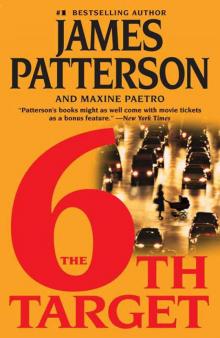 The 6th Target
The 6th Target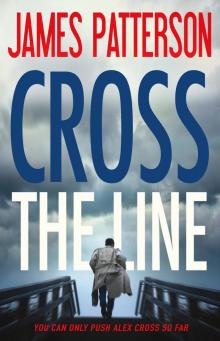 Cross the Line
Cross the Line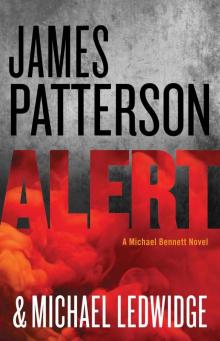 Alert
Alert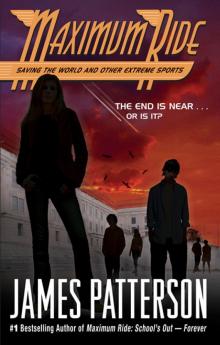 Saving the World and Other Extreme Sports
Saving the World and Other Extreme Sports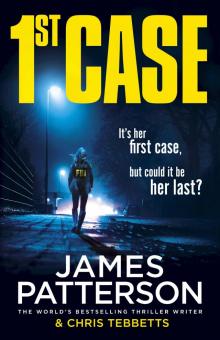 1st Case
1st Case Unlucky 13
Unlucky 13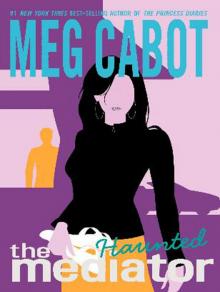 Haunted
Haunted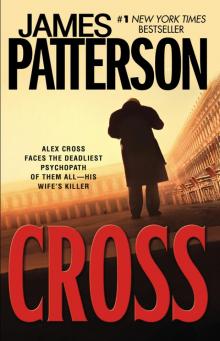 Cross
Cross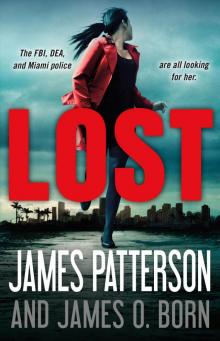 Lost
Lost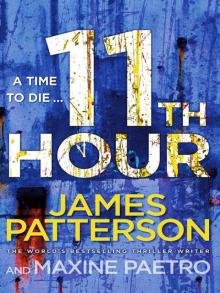 11th Hour
11th Hour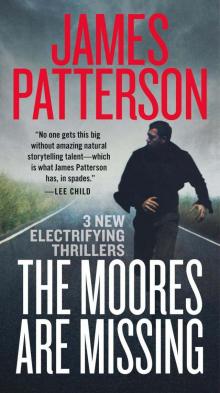 Bookshots Thriller Omnibus
Bookshots Thriller Omnibus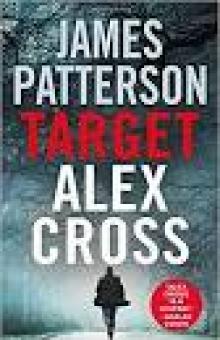 Target: Alex Cross
Target: Alex Cross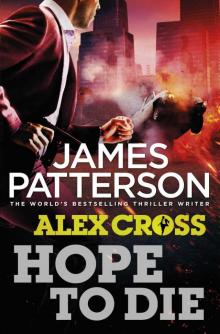 Hope to Die
Hope to Die The Noise
The Noise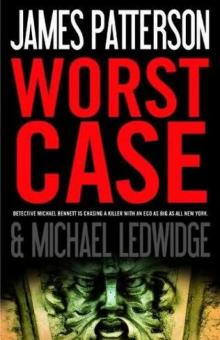 Worst Case
Worst Case Dog's Best Friend
Dog's Best Friend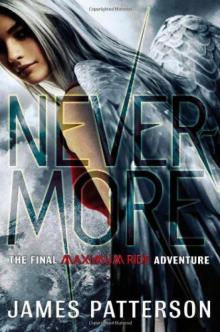 Nevermore: The Final Maximum Ride Adventure
Nevermore: The Final Maximum Ride Adventure I Funny: A Middle School Story
I Funny: A Middle School Story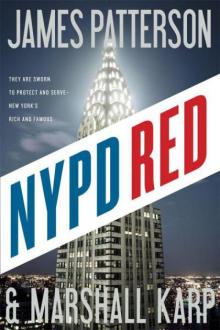 NYPD Red
NYPD Red Till Murder Do Us Part
Till Murder Do Us Part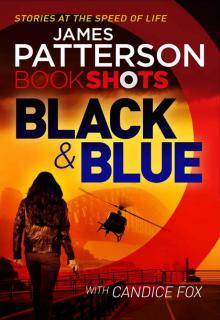 Black & Blue
Black & Blue Fang
Fang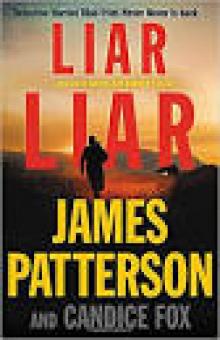 Liar Liar
Liar Liar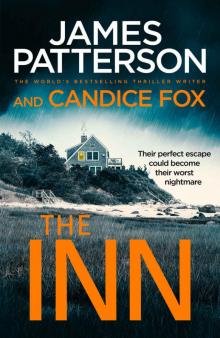 The Inn
The Inn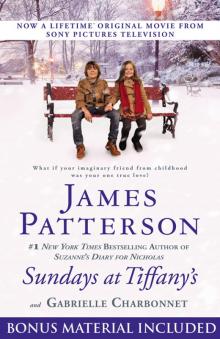 Sundays at Tiffany's
Sundays at Tiffany's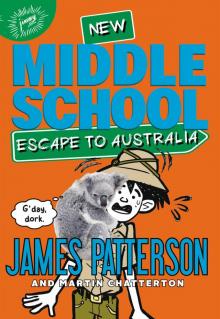 Middle School: Escape to Australia
Middle School: Escape to Australia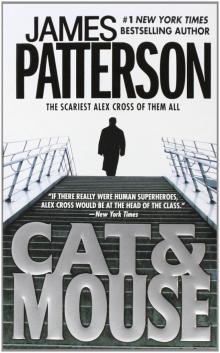 Cat and Mouse
Cat and Mouse Instinct
Instinct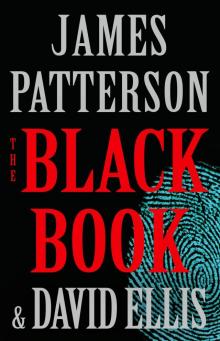 The Black Book
The Black Book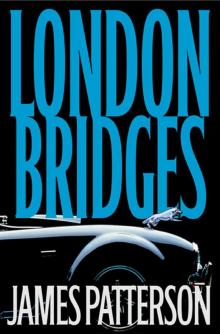 London Bridges
London Bridges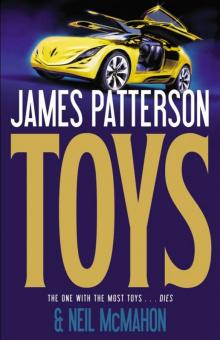 Toys
Toys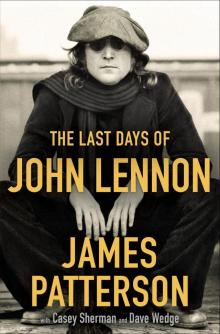 The Last Days of John Lennon
The Last Days of John Lennon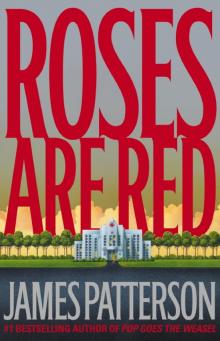 Roses Are Red
Roses Are Red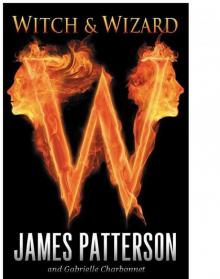 Witch & Wizard
Witch & Wizard The Dolls
The Dolls The Christmas Wedding
The Christmas Wedding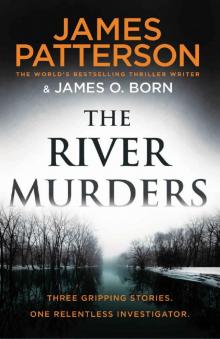 The River Murders
The River Murders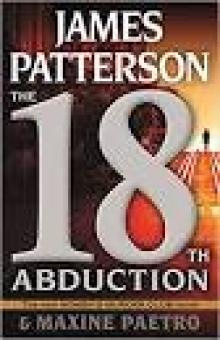 The 18th Abduction
The 18th Abduction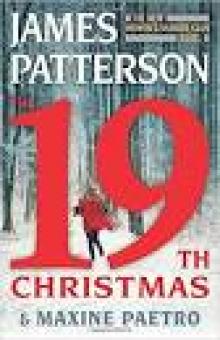 The 19th Christmas
The 19th Christmas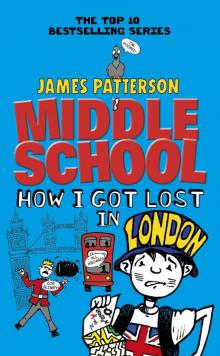 Middle School: How I Got Lost in London
Middle School: How I Got Lost in London Just My Rotten Luck
Just My Rotten Luck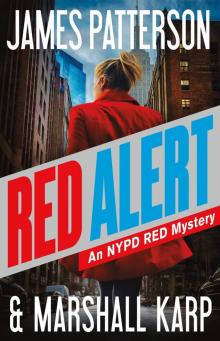 Red Alert
Red Alert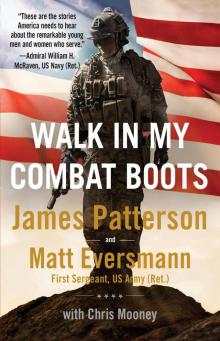 Walk in My Combat Boots
Walk in My Combat Boots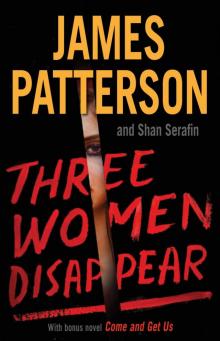 Three Women Disappear
Three Women Disappear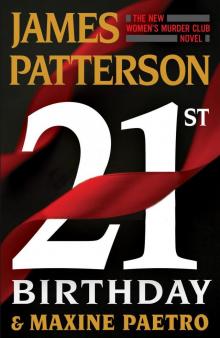 21st Birthday
21st Birthday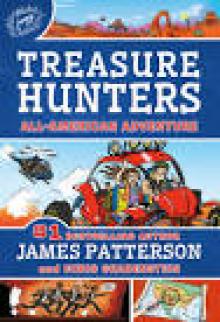 All-American Adventure
All-American Adventure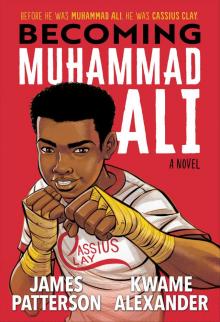 Becoming Muhammad Ali
Becoming Muhammad Ali The Murder of an Angel
The Murder of an Angel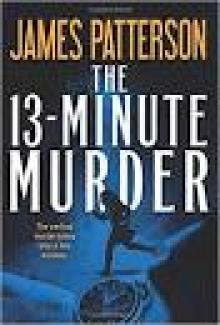 The 13-Minute Murder
The 13-Minute Murder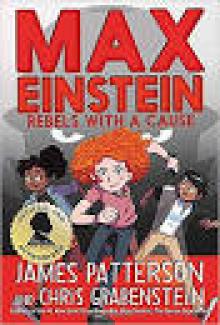 Rebels With a Cause
Rebels With a Cause The Trial
The Trial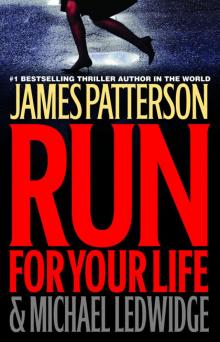 Run for Your Life
Run for Your Life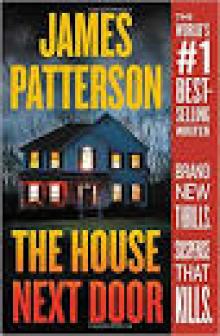 The House Next Door
The House Next Door NYPD Red 2
NYPD Red 2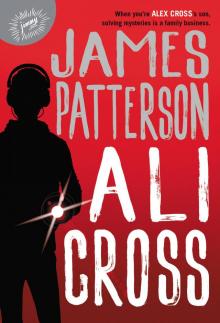 Ali Cross
Ali Cross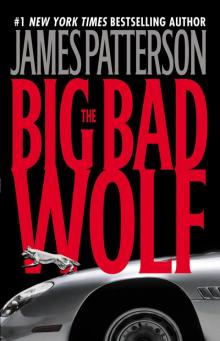 The Big Bad Wolf
The Big Bad Wolf Middle School: My Brother Is a Big, Fat Liar
Middle School: My Brother Is a Big, Fat Liar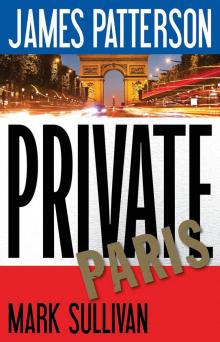 Private Paris
Private Paris Miracle on the 17th Green
Miracle on the 17th Green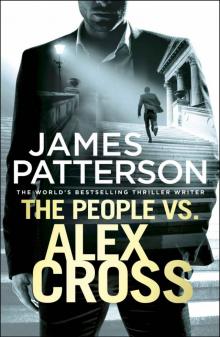 The People vs. Alex Cross
The People vs. Alex Cross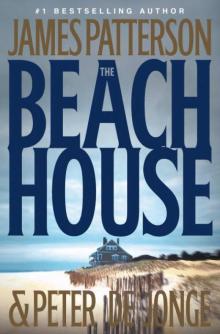 The Beach House
The Beach House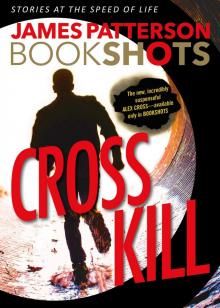 Cross Kill
Cross Kill Dog Diaries
Dog Diaries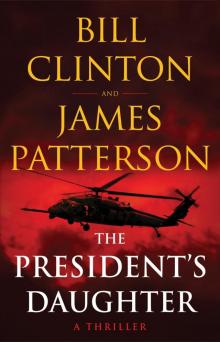 The President's Daughter
The President's Daughter Happy Howlidays
Happy Howlidays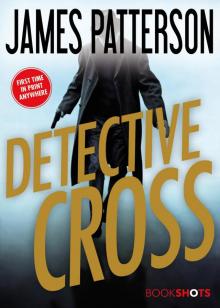 Detective Cross
Detective Cross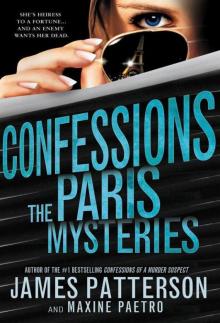 The Paris Mysteries
The Paris Mysteries Watch the Skies
Watch the Skies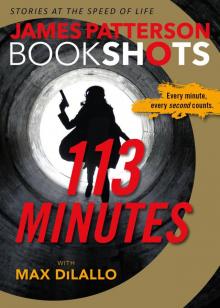 113 Minutes
113 Minutes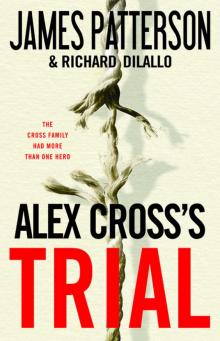 Alex Cross's Trial
Alex Cross's Trial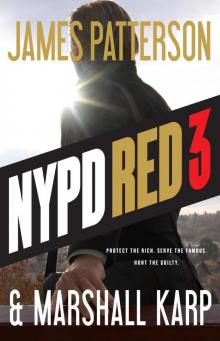 NYPD Red 3
NYPD Red 3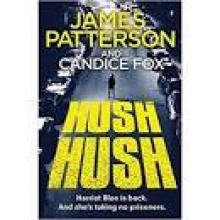 Hush Hush
Hush Hush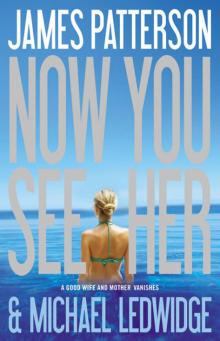 Now You See Her
Now You See Her Merry Christmas, Alex Cross
Merry Christmas, Alex Cross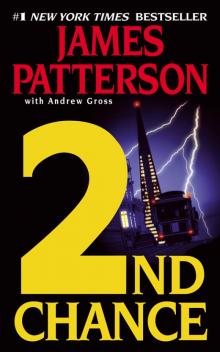 2nd Chance
2nd Chance Private Royals
Private Royals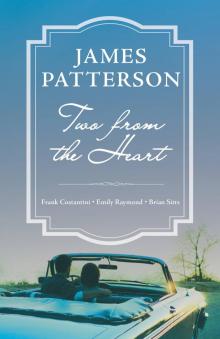 Two From the Heart
Two From the Heart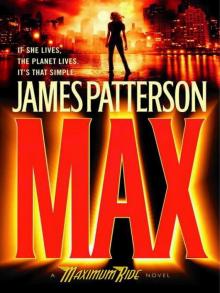 Max
Max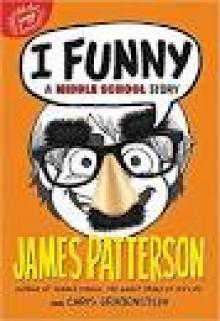 I, Funny
I, Funny Blindside (Michael Bennett)
Blindside (Michael Bennett) Sophia, Princess Among Beasts
Sophia, Princess Among Beasts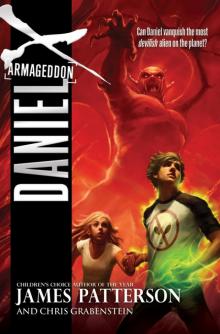 Armageddon
Armageddon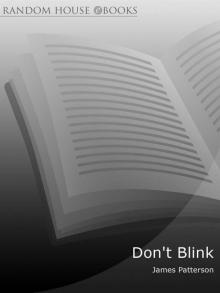 Don't Blink
Don't Blink NYPD Red 6
NYPD Red 6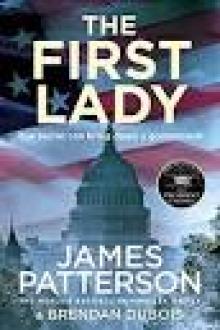 The First Lady
The First Lady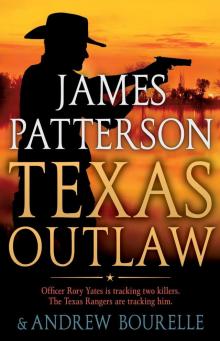 Texas Outlaw
Texas Outlaw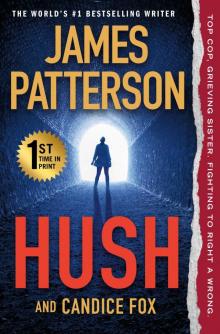 Hush
Hush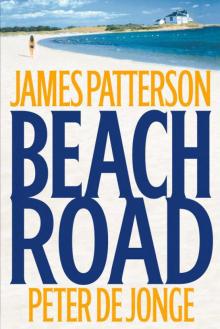 Beach Road
Beach Road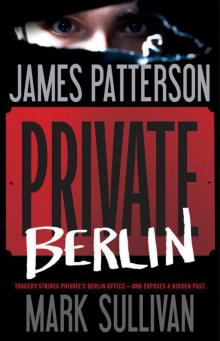 Private Berlin
Private Berlin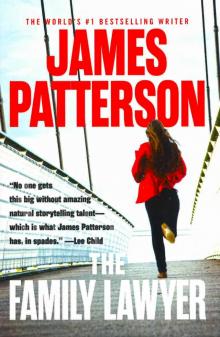 The Family Lawyer
The Family Lawyer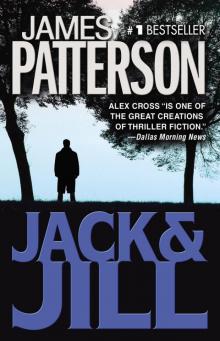 Jack & Jill
Jack & Jill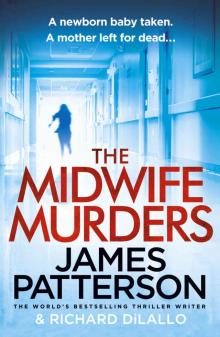 The Midwife Murders
The Midwife Murders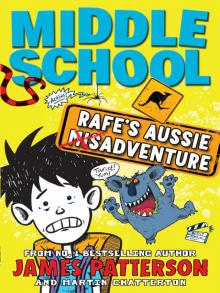 Middle School: Rafe's Aussie Adventure
Middle School: Rafe's Aussie Adventure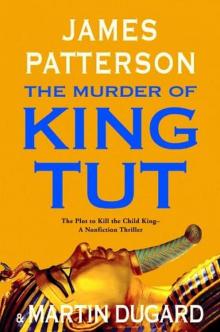 The Murder of King Tut: The Plot to Kill the Child King
The Murder of King Tut: The Plot to Kill the Child King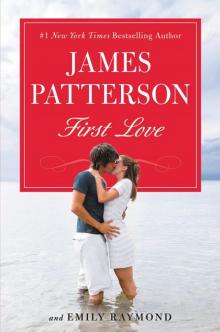 First Love
First Love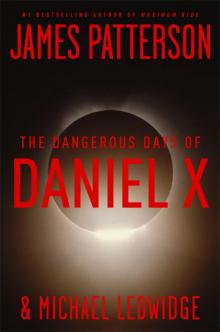 The Dangerous Days of Daniel X
The Dangerous Days of Daniel X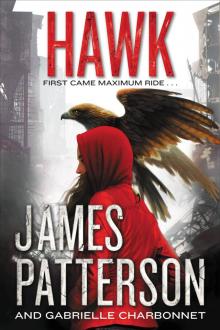 Hawk
Hawk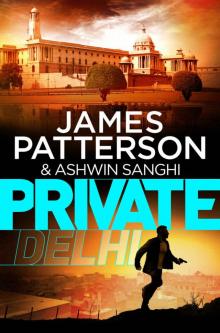 Private Delhi
Private Delhi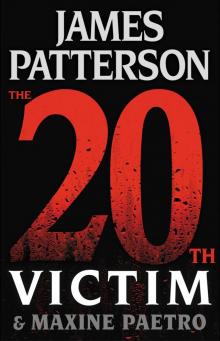 The 20th Victim
The 20th Victim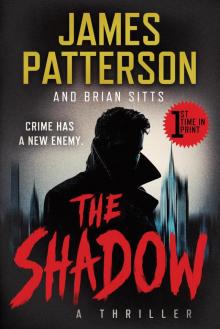 The Shadow
The Shadow Katt vs. Dogg
Katt vs. Dogg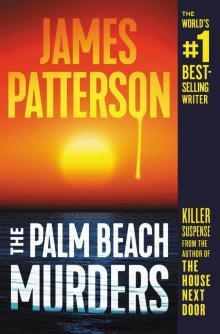 The Palm Beach Murders
The Palm Beach Murders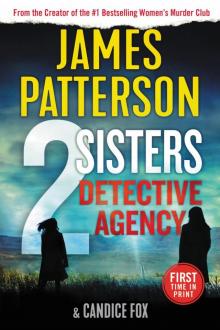 2 Sisters Detective Agency
2 Sisters Detective Agency Humans, Bow Down
Humans, Bow Down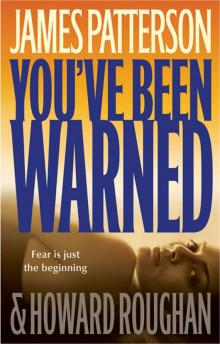 You've Been Warned
You've Been Warned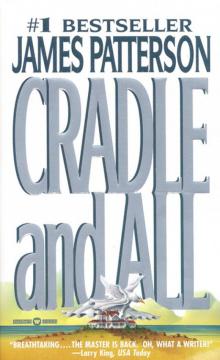 Cradle and All
Cradle and All 20th Victim: (Women’s Murder Club 20) (Women's Murder Club)
20th Victim: (Women’s Murder Club 20) (Women's Murder Club)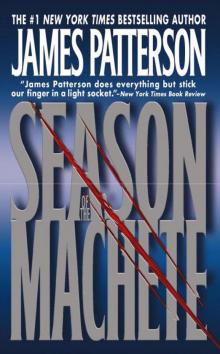 Season of the Machete
Season of the Machete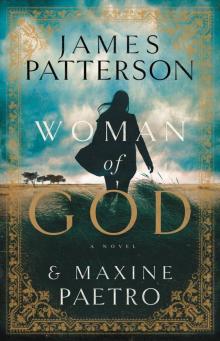 Woman of God
Woman of God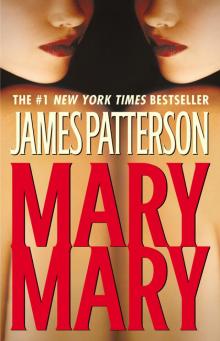 Mary, Mary
Mary, Mary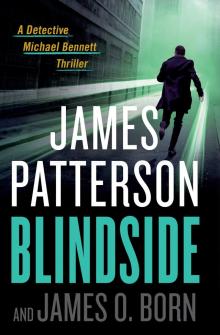 Blindside
Blindside Invisible
Invisible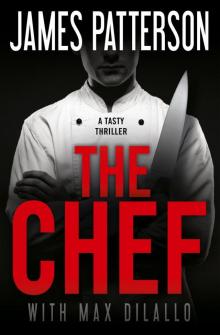 The Chef
The Chef Revenge
Revenge See How They Run
See How They Run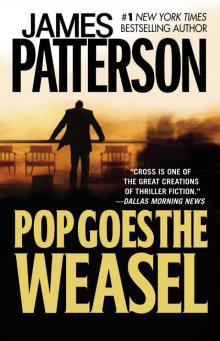 Pop Goes the Weasel
Pop Goes the Weasel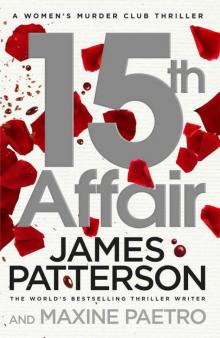 15th Affair
15th Affair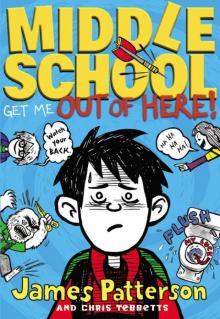 Middle School: Get Me Out of Here!
Middle School: Get Me Out of Here!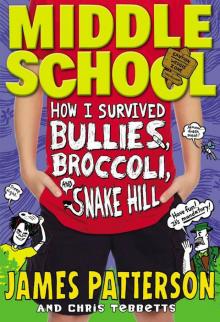 Middle School: How I Survived Bullies, Broccoli, and Snake Hill
Middle School: How I Survived Bullies, Broccoli, and Snake Hill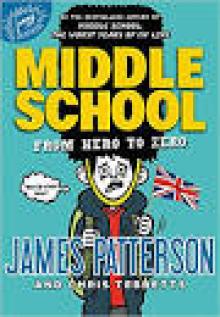 From Hero to Zero - Chris Tebbetts
From Hero to Zero - Chris Tebbetts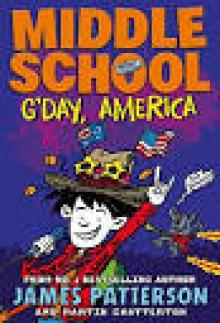 G'day, America
G'day, America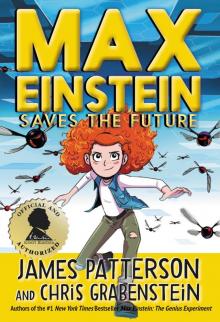 Max Einstein Saves the Future
Max Einstein Saves the Future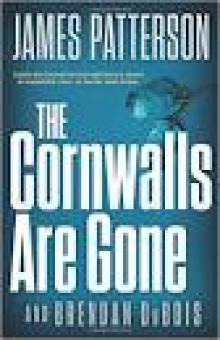 The Cornwalls Are Gone
The Cornwalls Are Gone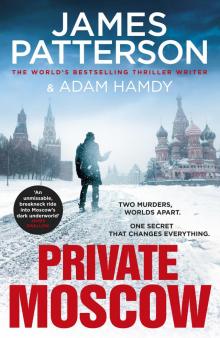 Private Moscow
Private Moscow Two Schools Out - Forever
Two Schools Out - Forever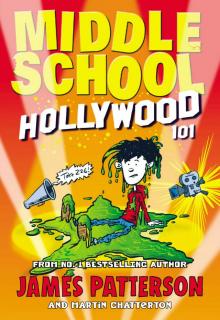 Hollywood 101
Hollywood 101 Deadly Cargo: BookShots
Deadly Cargo: BookShots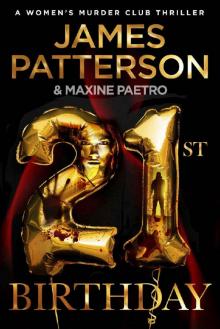 21st Birthday (Women's Murder Club)
21st Birthday (Women's Murder Club) The Sky Is Falling
The Sky Is Falling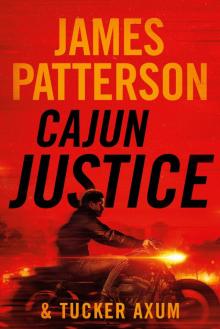 Cajun Justice
Cajun Justice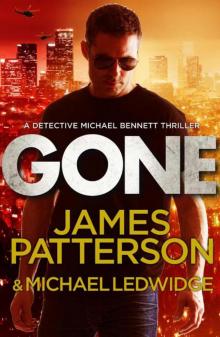 Bennett 06 - Gone
Bennett 06 - Gone The House of Kennedy
The House of Kennedy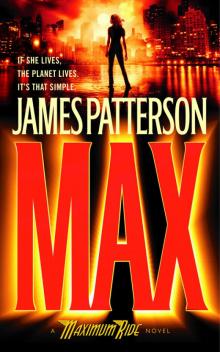 Waterwings
Waterwings Murder is Forever, Volume 2
Murder is Forever, Volume 2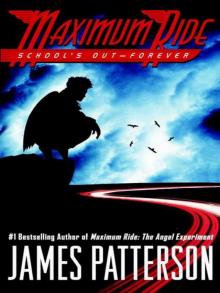 Maximum Ride 02
Maximum Ride 02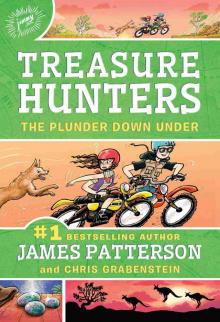 Treasure Hunters--The Plunder Down Under
Treasure Hunters--The Plunder Down Under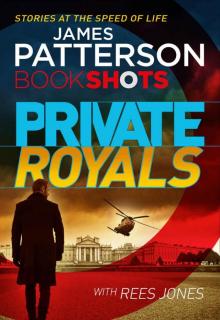 Private Royals: BookShots (A Private Thriller)
Private Royals: BookShots (A Private Thriller) After the End
After the End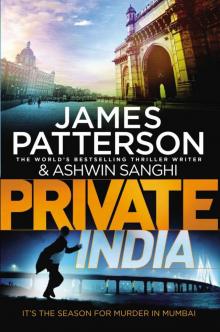 Private India: (Private 8)
Private India: (Private 8) Escape to Australia
Escape to Australia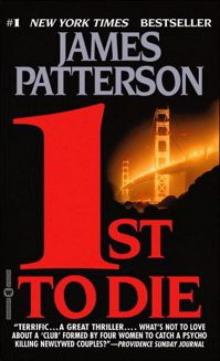 WMC - First to Die
WMC - First to Die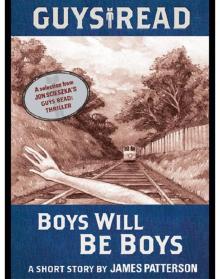 Boys Will Be Boys
Boys Will Be Boys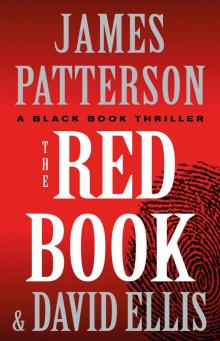 The Red Book
The Red Book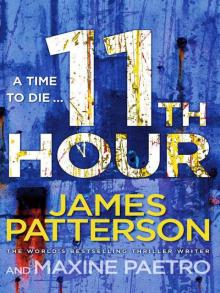 11th hour wmc-11
11th hour wmc-11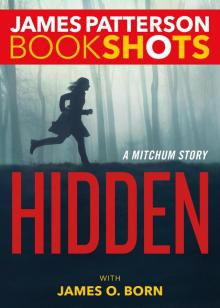 Hidden
Hidden You've Been Warned--Again
You've Been Warned--Again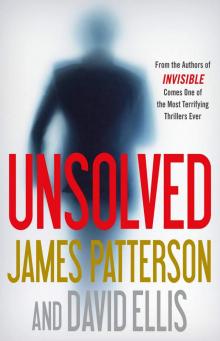 Unsolved
Unsolved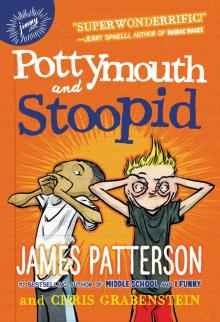 Pottymouth and Stoopid
Pottymouth and Stoopid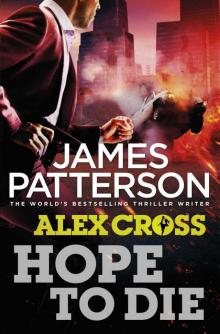 Hope to Die: (Alex Cross 22)
Hope to Die: (Alex Cross 22) The Moores Are Missing
The Moores Are Missing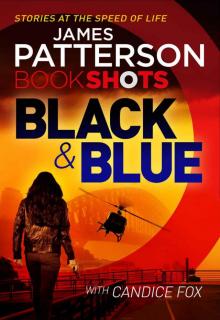 Black & Blue: BookShots (Detective Harriet Blue Series)
Black & Blue: BookShots (Detective Harriet Blue Series)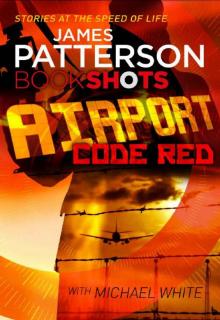 Airport - Code Red: BookShots
Airport - Code Red: BookShots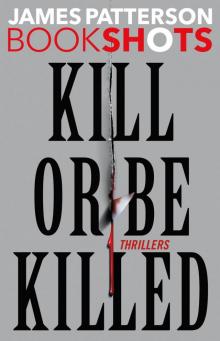 Kill or Be Killed
Kill or Be Killed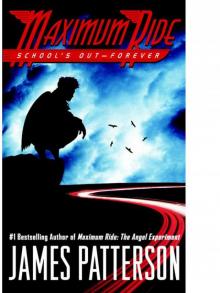 School's Out--Forever
School's Out--Forever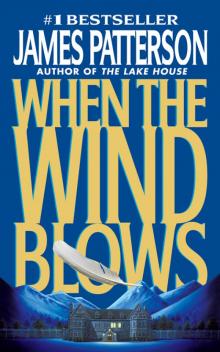 When the Wind Blows
When the Wind Blows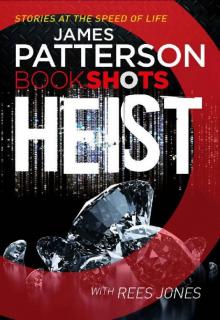 Heist: BookShots
Heist: BookShots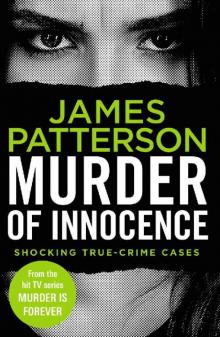 Murder of Innocence (Murder Is Forever)
Murder of Innocence (Murder Is Forever)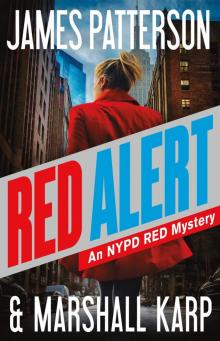 Red Alert_An NYPD Red Mystery
Red Alert_An NYPD Red Mystery Malicious
Malicious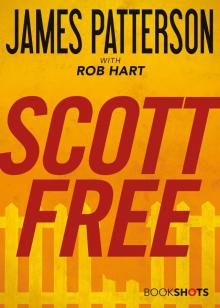 Scott Free
Scott Free The Summer House
The Summer House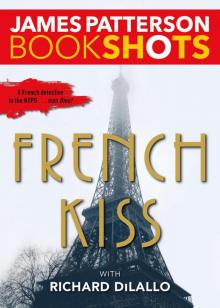 French Kiss
French Kiss Treasure Hunters
Treasure Hunters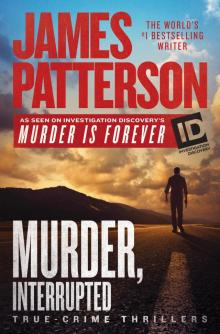 Murder Is Forever, Volume 1
Murder Is Forever, Volume 1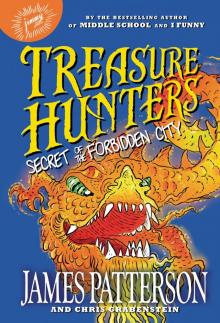 Secret of the Forbidden City
Secret of the Forbidden City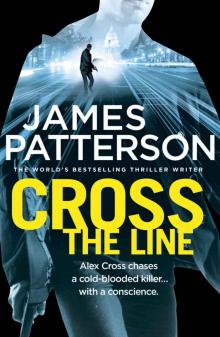 Cross the Line: (Alex Cross 24)
Cross the Line: (Alex Cross 24)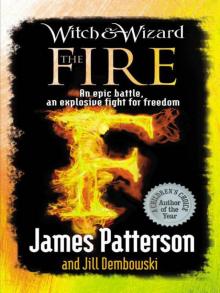 Witch & Wizard: The Fire
Witch & Wizard: The Fire![Women's Murder Club [06] The 6th Target Read online](http://i1.bookreadfree.com/i/03/24/womens_murder_club_06_the_6th_target_preview.jpg) Women's Murder Club [06] The 6th Target
Women's Murder Club [06] The 6th Target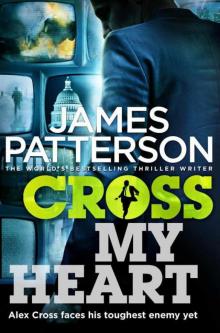 Cross My Heart ac-21
Cross My Heart ac-21 Alex Cross’s Trial ак-15
Alex Cross’s Trial ак-15 Alex Cross 03 - Jack & Jill
Alex Cross 03 - Jack & Jill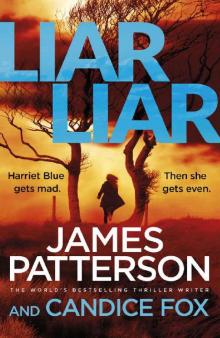 Liar Liar: (Harriet Blue 3) (Detective Harriet Blue Series)
Liar Liar: (Harriet Blue 3) (Detective Harriet Blue Series) Cross Country ак-14
Cross Country ак-14 Honeymoon h-1
Honeymoon h-1 Maximum Ride: The Angel Experiment
Maximum Ride: The Angel Experiment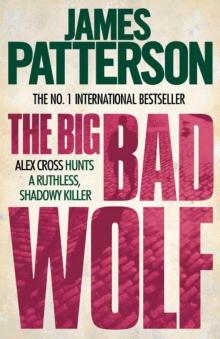 The Big Bad Wolf ак-9
The Big Bad Wolf ак-9 Dead Heat: BookShots (Book Shots)
Dead Heat: BookShots (Book Shots)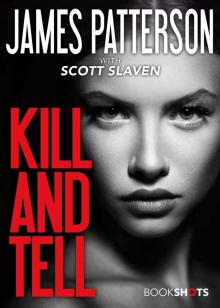 Kill and Tell
Kill and Tell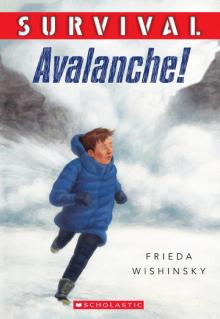 Avalanche
Avalanche Robot Revolution
Robot Revolution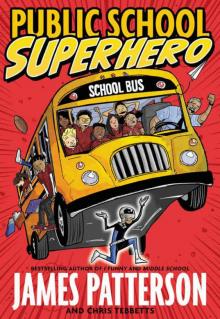 Public School Superhero
Public School Superhero 12th of Never
12th of Never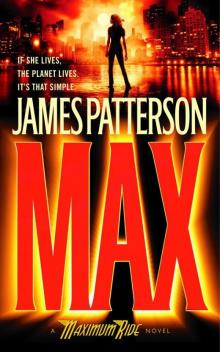 Max: A Maximum Ride Novel
Max: A Maximum Ride Novel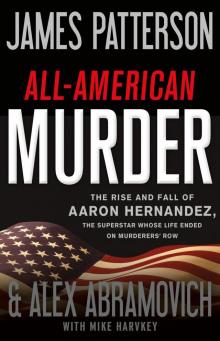 All-American Murder
All-American Murder Murder Games
Murder Games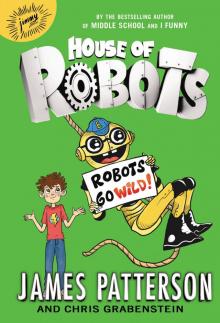 Robots Go Wild!
Robots Go Wild!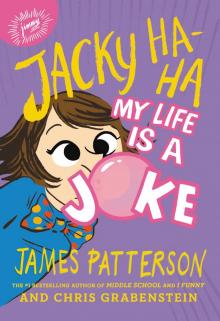 My Life Is a Joke
My Life Is a Joke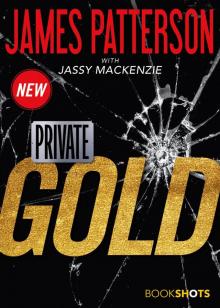 Private: Gold
Private: Gold Demons and Druids
Demons and Druids Jacky Ha-Ha
Jacky Ha-Ha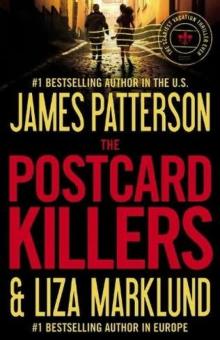 Postcard killers
Postcard killers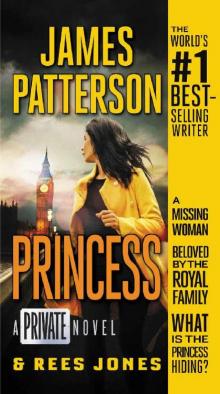 Princess: A Private Novel
Princess: A Private Novel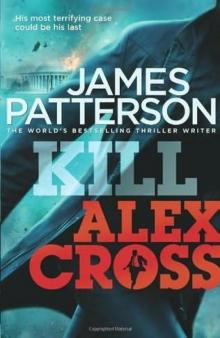 Kill Alex Cross ac-18
Kill Alex Cross ac-18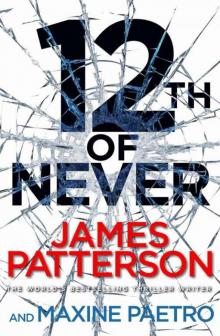 12th of Never wmc-12
12th of Never wmc-12 The Murder of King Tut
The Murder of King Tut I Totally Funniest
I Totally Funniest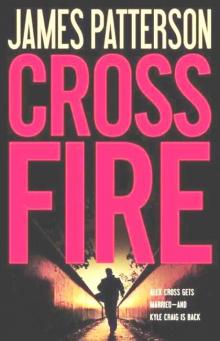 Cross Fire ак-17
Cross Fire ак-17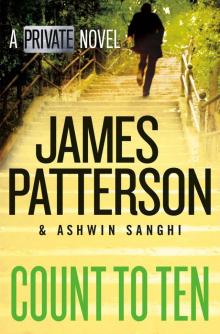 Count to Ten
Count to Ten![Women's Murder Club [10] 10th Anniversary Read online](http://i1.bookreadfree.com/i1/03/30/womens_murder_club_10_10th_anniversary_preview.jpg) Women's Murder Club [10] 10th Anniversary
Women's Murder Club [10] 10th Anniversary![Women's Murder Club [01] 1st to Die Read online](http://i1.bookreadfree.com/i1/03/31/womens_murder_club_01_1st_to_die_preview.jpg) Women's Murder Club [01] 1st to Die
Women's Murder Club [01] 1st to Die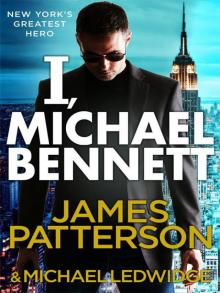 I, Michael Bennett mb-5
I, Michael Bennett mb-5 Nooners
Nooners![Women's Murder Club [08] The 8th Confession Read online](http://i1.bookreadfree.com/i1/04/03/womens_murder_club_08_the_8th_confession_preview.jpg) Women's Murder Club [08] The 8th Confession
Women's Murder Club [08] The 8th Confession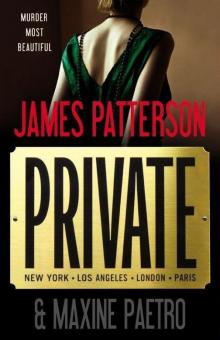 Private jm-1
Private jm-1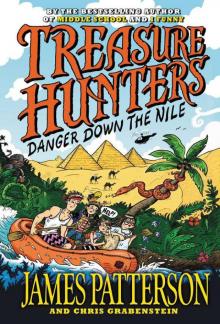 Treasure Hunters: Danger Down the Nile
Treasure Hunters: Danger Down the Nile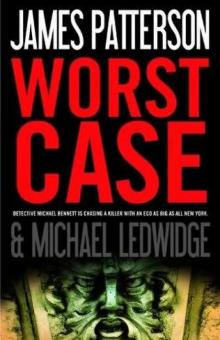 Worst Case mb-3
Worst Case mb-3 Don’t Blink
Don’t Blink The Games
The Games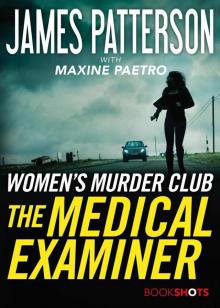 The Medical Examiner: A Women's Murder Club Story
The Medical Examiner: A Women's Murder Club Story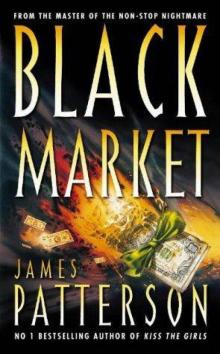 Black Market
Black Market Gone mb-6
Gone mb-6![Women's Murder Club [02] 2nd Chance Read online](http://i1.bookreadfree.com/i1/04/04/womens_murder_club_02_2nd_chance_preview.jpg) Women's Murder Club [02] 2nd Chance
Women's Murder Club [02] 2nd Chance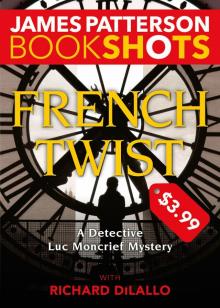 French Twist
French Twist Kenny Wright
Kenny Wright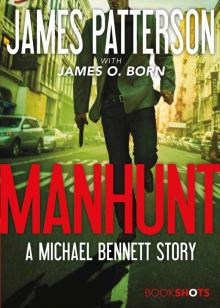 Manhunt: A Michael Bennett Story
Manhunt: A Michael Bennett Story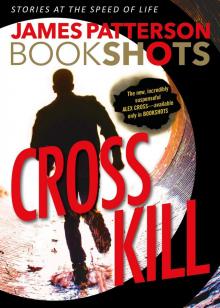 Cross Kill: An Alex Cross Story
Cross Kill: An Alex Cross Story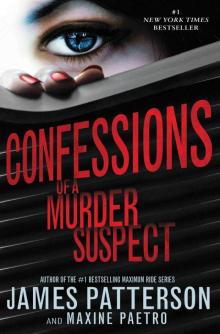 Confessions of a Murder Suspect td-1
Confessions of a Murder Suspect td-1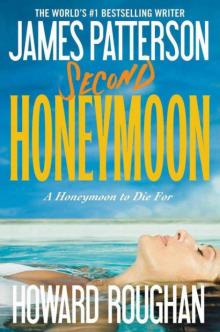 Second Honeymoon h-2
Second Honeymoon h-2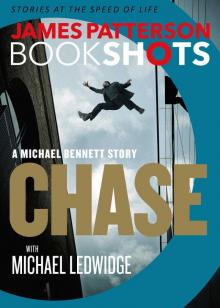 Chase_A BookShot_A Michael Bennett Story
Chase_A BookShot_A Michael Bennett Story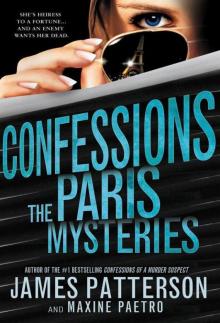 Confessions: The Paris Mysteries
Confessions: The Paris Mysteries![Women's Murder Club [09] The 9th Judgment Read online](http://i1.bookreadfree.com/i2/04/08/womens_murder_club_09_the_9th_judgment_preview.jpg) Women's Murder Club [09] The 9th Judgment
Women's Murder Club [09] The 9th Judgment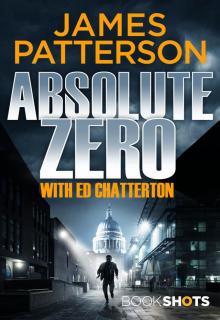 Absolute Zero
Absolute Zero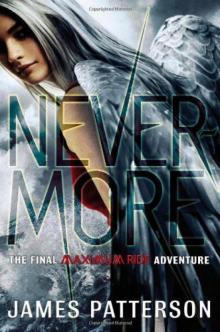 Nevermore: The Final Maximum Ride Adventure mr-8
Nevermore: The Final Maximum Ride Adventure mr-8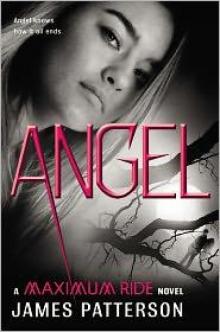 Angel: A Maximum Ride Novel mr-7
Angel: A Maximum Ride Novel mr-7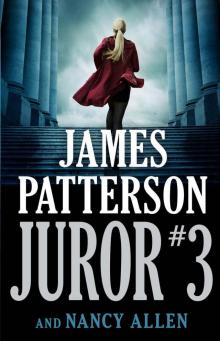 Juror #3
Juror #3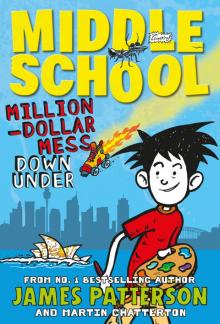 Million-Dollar Mess Down Under
Million-Dollar Mess Down Under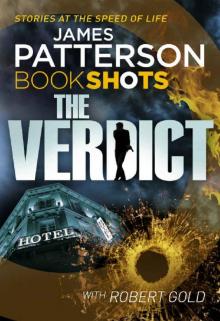 The Verdict: BookShots (A Jon Roscoe Thriller)
The Verdict: BookShots (A Jon Roscoe Thriller)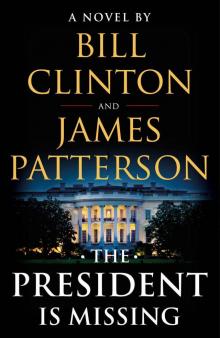 The President Is Missing: A Novel
The President Is Missing: A Novel![Women's Murder Club [04] 4th of July Read online](http://i1.bookreadfree.com/i2/04/06/womens_murder_club_04_4th_of_july_preview.jpg) Women's Murder Club [04] 4th of July
Women's Murder Club [04] 4th of July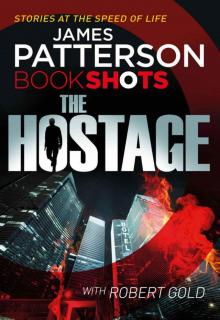 The Hostage: BookShots (Hotel Series)
The Hostage: BookShots (Hotel Series)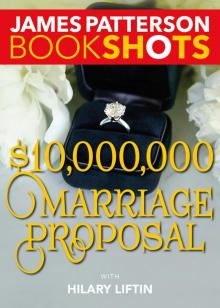 $10,000,000 Marriage Proposal
$10,000,000 Marriage Proposal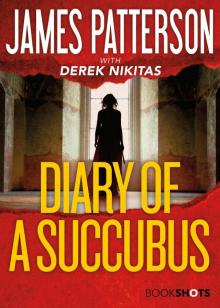 Diary of a Succubus
Diary of a Succubus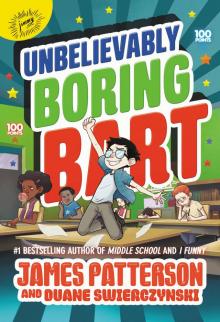 Unbelievably Boring Bart
Unbelievably Boring Bart Angel: A Maximum Ride Novel
Angel: A Maximum Ride Novel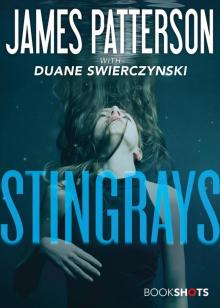 Stingrays
Stingrays Confessions: The Private School Murders
Confessions: The Private School Murders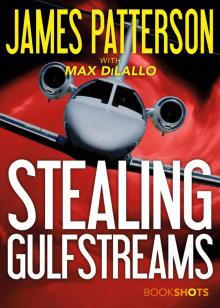 Stealing Gulfstreams
Stealing Gulfstreams![Women's Murder Club [05] The 5th Horseman Read online](http://i1.bookreadfree.com/i2/04/05/womens_murder_club_05_the_5th_horseman_preview.jpg) Women's Murder Club [05] The 5th Horseman
Women's Murder Club [05] The 5th Horseman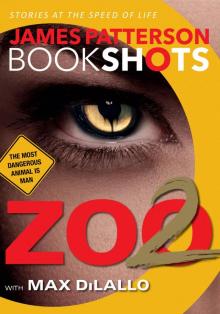 Zoo 2
Zoo 2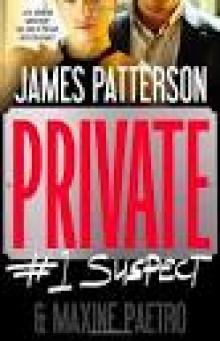 Jack Morgan 02 - Private London
Jack Morgan 02 - Private London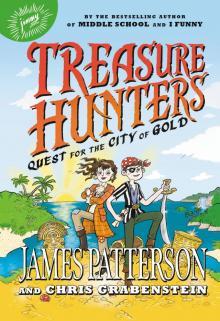 Treasure Hunters--Quest for the City of Gold
Treasure Hunters--Quest for the City of Gold The Christmas Mystery
The Christmas Mystery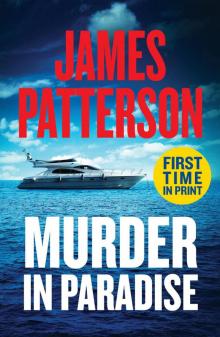 Murder in Paradise
Murder in Paradise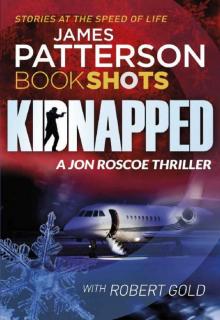 Kidnapped: BookShots (A Jon Roscoe Thriller)
Kidnapped: BookShots (A Jon Roscoe Thriller) Triple Homicide_Thrillers
Triple Homicide_Thrillers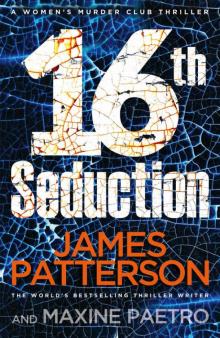 16th Seduction: (Women’s Murder Club 16) (Women's Murder Club)
16th Seduction: (Women’s Murder Club 16) (Women's Murder Club)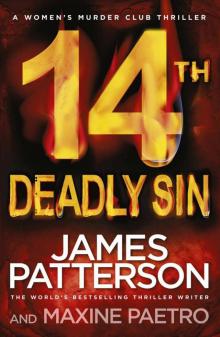 14th Deadly Sin: (Women’s Murder Club 14)
14th Deadly Sin: (Women’s Murder Club 14)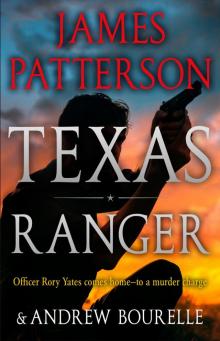 Texas Ranger
Texas Ranger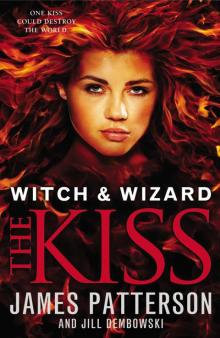 Witch & Wizard 04 - The Kiss
Witch & Wizard 04 - The Kiss![Women's Murder Club [03] 3rd Degree Read online](http://i1.bookreadfree.com/i2/04/12/womens_murder_club_03_3rd_degree_preview.jpg) Women's Murder Club [03] 3rd Degree
Women's Murder Club [03] 3rd Degree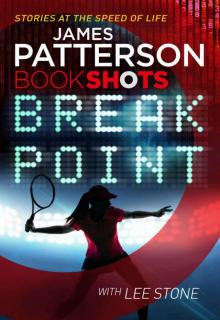 Break Point: BookShots
Break Point: BookShots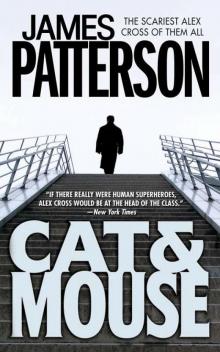 Alex Cross 04 - Cat & Mouse
Alex Cross 04 - Cat & Mouse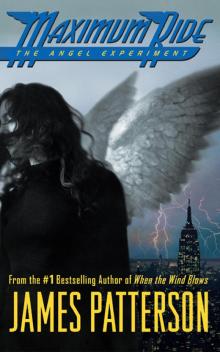 Maximum Ride
Maximum Ride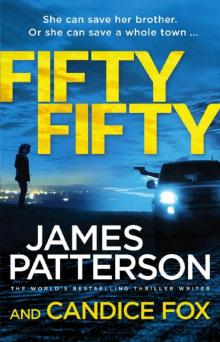 Fifty Fifty: (Harriet Blue 2) (Detective Harriet Blue Series)
Fifty Fifty: (Harriet Blue 2) (Detective Harriet Blue Series)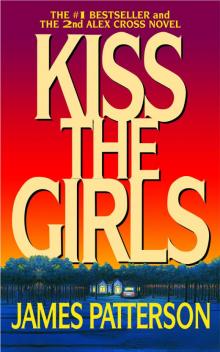 Alex Cross 02 - Kiss the Girls
Alex Cross 02 - Kiss the Girls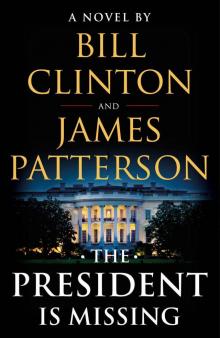 The President Is Missing
The President Is Missing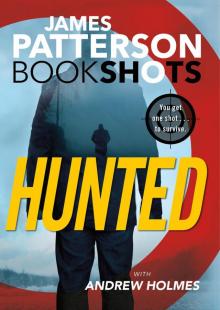 Hunted
Hunted House of Robots
House of Robots Dangerous Days of Daniel X
Dangerous Days of Daniel X Tick Tock mb-4
Tick Tock mb-4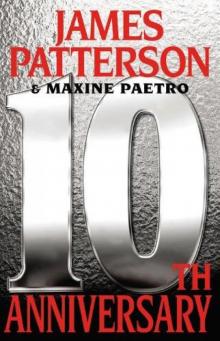 10th Anniversary wmc-10
10th Anniversary wmc-10 The Exile
The Exile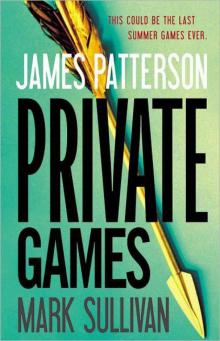 Private Games-Jack Morgan 4 jm-4
Private Games-Jack Morgan 4 jm-4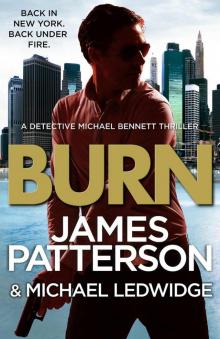 Burn: (Michael Bennett 7)
Burn: (Michael Bennett 7)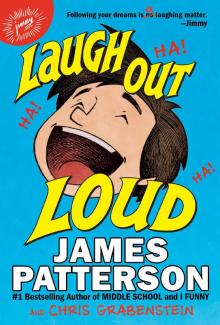 Laugh Out Loud
Laugh Out Loud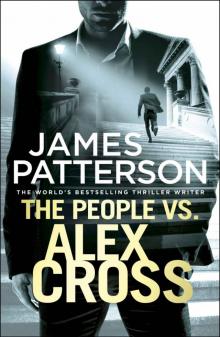 The People vs. Alex Cross: (Alex Cross 25)
The People vs. Alex Cross: (Alex Cross 25)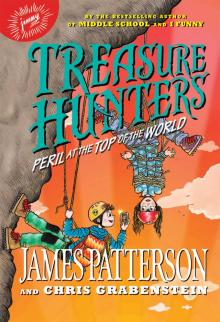 Peril at the Top of the World
Peril at the Top of the World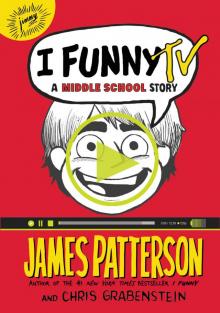 I Funny TV
I Funny TV Merry Christmas, Alex Cross ac-19
Merry Christmas, Alex Cross ac-19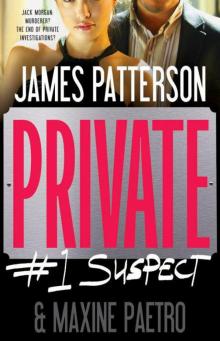 #1 Suspect jm-3
#1 Suspect jm-3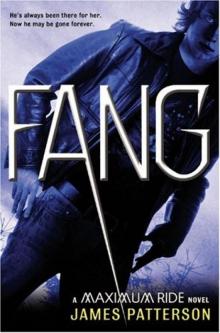 Fang: A Maximum Ride Novel
Fang: A Maximum Ride Novel![Women's Murder Club [07] 7th Heaven Read online](http://i1.bookreadfree.com/i2/04/13/womens_murder_club_07_7th_heaven_preview.jpg) Women's Murder Club [07] 7th Heaven
Women's Murder Club [07] 7th Heaven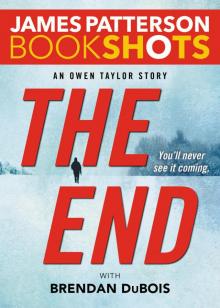 The End
The End